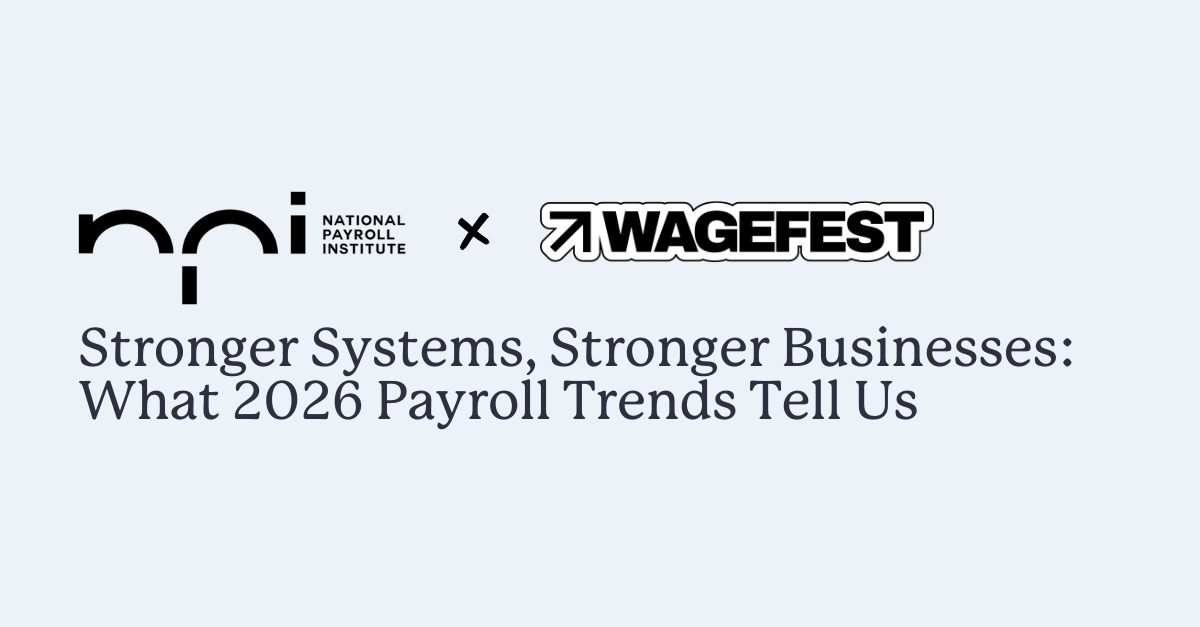Become an insider!
Get our latest payroll and small business articles sent straight to your inbox.
Providing employees with competitive benefits can boost morale and retention — but these perks come with tax implications that many Canadian employers overlook. The Canada Revenue Agency (CRA) closely monitors benefits for errors in taxability, calculations, reporting, and recordkeeping, which can lead to payroll liabilities, penalties, interest, and incorrect T4 reporting.
Understanding CRA Benefits
A benefit is anything your employees receive beyond their regular paycheque, whether it’s a company vehicle, a meal allowance, or your annual holiday party. Most benefits are taxable unless CRA rules say otherwise, and that’s where things get tricky.
The CRA keeps a close eye on how employers handle benefits, and certain areas are audit magnets because they’re the most commonly mishandled. Small mistakes can lead to penalties, interest charges, and incorrect T4s that create headaches for everyone.
In this post, we’ll walk you through the most common pitfalls and show you how to stay compliant. But first, remember: every taxable benefit follows the same four-step process:
- Determine if the benefit is taxable
- Calculate the value of the benefit
- Withhold payroll deductions and remit GST/HST (if applicable)
- Report the benefit on a T4 slip
Common CRA Watchlist Items and How to Get Them Right
Let’s break down the three benefit types that land on the CRA’s radar most often and exactly what you need to do to handle them correctly.
Automobile Standby Charge and Operating Expense Benefits
Company vehicles are a valuable perk but they come with tax complexity. When an employee has access to a company vehicle for personal use (even just the daily commute), that personal use creates a taxable benefit. Without proper documentation and calculations, you could face CRA penalties and incorrect T4 reporting.
Common Mistakes with Automobile Standby Charge and Operating Expense Benefits
- Not maintaining mileage logs separating business vs. personal use
- Applying reduced or simplified standby charges without CRA eligibility
- Miscalculating operating expense benefits
- Misclassifying vehicles (automobiles vs. motor vehicles–use the CRA Vehicle Validator to confirm.)
- Not collecting personal-use reimbursements within 45 days after year-end
In order to determine the employees personal use portion of an automobile, employers must first calculate:
- Standby charge benefit – determines vehicle availability
- Operating expense benefit – determines personal-use costs (fuel, insurance, maintenance) paid by the employer.
Pro tip: To simplify the process for calculating standby charges, the CRA provides an Automobile Benefits Online Calculator
To learn more about the various standby charges, payroll deductions, GST/HST impacts and year end reporting, check out our in depth blog Automobile Standby Charge and Operating Expense Benefits
Employee Allowances
Many employers provide allowances for travel, personal vehicle use, meals, or incidental expenses. But if those payments go over CRA limits or aren’t properly documented, they could be considered taxable. Before you can determine whether an allowance is taxable, it’s important to understand how it differs from a reimbursement — a distinction the CRA takes seriously.
Allowance vs. Reimbursement
- Allowance: Extra payment to cover anticipated costs; predetermined, intended for a specific purpose, and usually does not require receipts.
- Reimbursement: Payment for actual expenses incurred, supported by receipts or expense reports.
Common Mistakes With Employee Allowances
- Paying allowances outside payroll
- Treating allowances and reimbursements the same
- Ignoring CRA prescribed rates
- Failing to account for payroll deductions (Tax, EI, CPP/QPP)
- Not reporting on T4/T4A
Let’s look at two of the most popular allowances employers provide — meals and vehicles.
Employee Overtime Meals and Allowances
Meal allowances are a common type of allowance that employers provide to cover food during travel or overtime.These are generally non-taxable if all of the following conditions are met:
- The meal or allowance is reasonable, reflecting CRA guidance
- Employee works ≥2 hours overtime before/after scheduled shift
- Overtime is occasional (<3 times/week)
- Frequent overtime meals are taxable
Pro tip: Use this CRA tool to help calculate payroll deductions and contributions for meals provided by the employer.
Employee Automobile Allowances
Employers may offer allowances to employees who use their personal vehicles for work-related travel. These are generally non-taxable if all of the following conditions are met:
- Based only on employment-related kilometres
- The per-kilometre rate is reasonable, reflecting CRA guidance
- The employee was not reimbursed for same vehicle expenses (excluding tolls, ferry, supplementary insurance)
An employee automobile allowance becomes taxable if all of the following conditions are not met:
- The per-kilometre rate is unreasonable (too high or too low)
- A flat-rate allowance is provided that does not reflect actual kilometres driven
- Multiple allowances are combined (e.g., a flat-rate plus a per-kilometre rate) for the same vehicle use, which CRA treats as a single taxable allowance
Payroll Deductions for Taxable Allowances
Now that we’ve covered how to determine whether an allowance is taxable, the next step is knowing how to handle it correctly through payroll. Allowances that exceed CRA limits or fail to meet exemption criteria are treated as taxable benefits, and are subject to payroll deductions.
Here’s what that means for payroll:
- Deduct income tax and CPP/QPP contributions, since taxable benefits are pensionable
- Deduct EI premiums if the payment is made in cash (cheque, EFT, or direct deposit), because it’s also insurable earnings
Social Events and Hospitality Functions
From holiday parties to team-building events, social gatherings help celebrate achievements and strengthen workplace culture. Still, the CRA draws clear lines around which events are considered taxable.It all comes down to the kind of event, how often it happens, and what’s included.
Let’s break down how social events and hospitality functions differ:
- Social events, held in-person, virtually, or in a hybrid format, are organized primarily for enjoyment or celebration— think holiday parties, quarterly get-togethers, or company picnics
- Hospitality functions are work-related events where you provide food, drinks, or entertainment — think client appreciation dinners or conference receptions
Common Mistakes With Social Events and Hospitality Functions
- Assuming all social events or hospitality expenses are non-taxable
- Failing to document the purpose or intent of the event
- Hosting events too frequently or exceeding CRA cost limits, making them taxable
- Not reporting taxable portions on T4/T4A slips
Social Events
Social events — whether in-person, virtual, or hybrid — are gatherings hosted primarily for fun or celebration, like holiday parties, quarterly team socials, or company picnics. Under CRA policy, they are non-taxable if all of the following conditions are met:
- It is available to all employees (at the employer’s place of business, branch, or division)
- For in-person events, the total cost per person is $150 or less, including taxes
- Spouses or common-law partners count toward this limit
- Ancillary costs like transport and accommodations do not count toward this limit
- For fully virtual events, the total cost per person (including taxes) is:
- $50 or less if the event includes only meals, beverages, and delivery services
- $100 or less if the event includes meals, beverages, delivery services, and entertainment
- Gift cards for virtual attendees (food and beverage) must meet the CRA’s non-cash card conditions
- The total number of employer-paid social events — across in-person, hybrid, and virtual formats — does not exceed six per year.
If any of these conditions are not met, the event becomes a taxable benefit. In that case, the full cost — including ancillary expenses and spouse or partner costs — must be added to the employee’s taxable income.
Pro tip: For more details on how to determine whether an event is taxable, check out the CRA’s official guide on the taxability of social events and hospitality functions
Hospitality Functions
Not every employer-hosted event is designed purely for fun. Some gatherings serve a business purpose — like planning sessions, professional development, or networking opportunities. These fall under hospitality functions, which are treated differently than social events when it comes to taxability.
Hospitality benefits are not taxable when they meet all of the following CRA conditions:
- The event is part of a work-related activity (e.g., planning, education, or networking)
- The employer is the primary beneficiary of the event.
- The event is not a reward, celebration, or recognizing performance
- Each function is reasonably priced
If the event is mainly for employee enjoyment or the costs are considered excessive, the value becomes a taxable benefit.
Payroll Deductions For Social Events and Hospitality Functions
If a social event or hospitality function is considered taxable, it’s important to process payroll deductions and reporting accurately. Here’s how to stay compliant:
-
- Include the Benefit in the Correct Pay Period
- Ensure the value of the benefit is reflected in the pay period when the employee receives or enjoys it
- Determine the Type of Benefit
- Non-cash or near-cash benefits (Ex. free meals, gift cards, event tickets)
- Withhold income tax and CPP/QPP contributions
- Do not withhold EI premiums
- Remit GST/HST where applicable
- Cash benefits (Ex. reimbursed meal allowances, cash prizes)
- Withhold income tax, CPP/QPP, and EI premiums
- Do not remit GST/HST
- Non-cash or near-cash benefits (Ex. free meals, gift cards, event tickets)
- Report and Remit Deductions
- Add the taxable amount to the employee’s T4 slip for the year in which the benefit was received
- Remit the required deductions by your next regular payroll remittance due date
- Include the Benefit in the Correct Pay Period
T4 Reporting of Taxable Benefits
Once you’ve determined that a benefit is taxable and withheld the appropriate deductions, the final step is reporting it correctly on your employee’s T4 slip. Accurate T4 reporting ensures proper income tracking, correct payroll contributions, and CRA compliance—preventing under- or over-contributions to CPP/QPP, EI, and income tax.
The key to T4 reporting is understanding whether the benefit is cash or non-cash, because each type gets reported differently.
Non-cash or near-cash benefits
These include things like company vehicle personal use, free meals at events, gift cards, or event tickets.
Report them in:
- Box 14 – Employment income: Report the total value of the benefit as part of the employee’s income
- Box 26 – CPP/QPP pensionable earnings: Include the taxable portion because it contributes to the employee’s pensionable earnings
- Code 40 – Other information: Use this code to identify the specific type of taxable benefit
Important: Do not report non-cash benefits in Box 24 (EI insurable earnings), because they are not considered insurable.
Cash benefits
These include reimbursed meal allowances, cash bonuses, or flat-rate allowances paid through payroll.
Report them in:
- Box 14 – Employment income: Include the value of the benefit as income
- Box 24 – EI insurable earnings: Since cash benefits are considered insurable, report here to ensure proper EI contributions
- Box 26 – CPP/QPP pensionable earnings: Include the amount because it counts toward pensionable earnings
- Code 40 – Other information: Use this code to specify the type of benefit reported
Getting T4 reporting right isn’t just about avoiding penalties—it ensures your employees’ income and contributions are accurately recorded, protecting both you and your team come tax time.
Keep Benefits Compliant Without the Headache
Getting taxable benefits right isn’t just about avoiding penalties—it’s about making sure your people are paid correctly and your year-end reporting is clean. But tracking vehicle use, monitoring per-kilometre rates, and calculating standby charges? That’s a lot to manage manually.
Wagepoint takes the guesswork out of taxable benefits. Our payroll software automatically manages deductions, pays remittances, and generates accurate T4 slips—so you can focus on running your business, not second-guessing your payroll.
Ready to simplify benefits management? Book a Wagepoint today.











